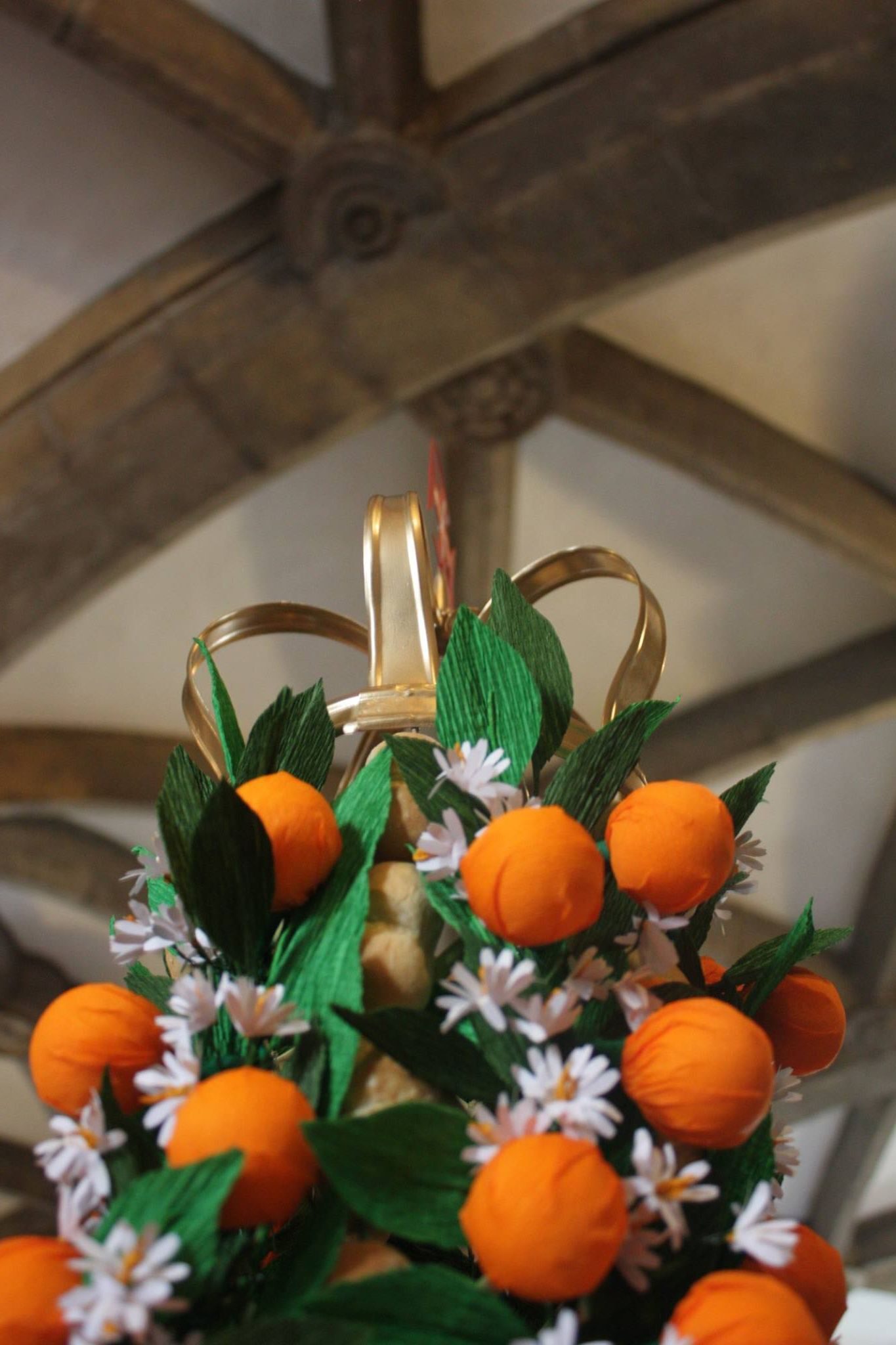When King D.Dinis obtained from pope John XXII the creation of the Military Order of Christ, which was to render such inestimable services to Portugal and the World, his virtuous wife, Queen Isabel de Aragão – the Saint – laid the foundation of the great movement of Christian solidarity by instituting the Congregation of the Holy Spirit, over the Apostles, with festivities and rituals which in many cases undoubtedly of old pagan origin, like the “Festa dos Tabuleiros”.
In Tomar the festivities remained unchanged until the 17th Century and even today several of the ceremonies are still maintained, such as: the Procession, the blessing of the loaves, the shape of the Tabuleiro, the virginal meaning of the white dress worn by the girls, the standards and crowns as well as the distribution of the « Pêza» – comprises bread blessed by the Priest, meat from cattle slaughtered for the purpose, which, in older times, was immolated, and wine – to poor people. Little by little the ritual of the “Impérios” with its coronations, “Mordomos” (Butlers) and “Foliões” disappeared, but the ritual of the main ceremonies is still performed in exactly the same way as it was in its origins.
The Tabuleiros are still carried on the heads of pretty young girls from villages and the purity and modesty of the people of our country is portrayed in the whiteness of their dresses and the simplicity of their ornaments, all the “Tabuleiros” are topped by a dove or a cross, the Holy Spirit creed.
The Trays’ Festival takes place every 4 years in the beginning of July in Tomar.
The next edition of this iconic event will take place in 2027 in Tomar. Miss Maria João Lima Morais was the first woman ever who took office in the last edition of the Trays' Feast in 2019.
Opening of the ornamented streets
The Trays’ Feast is essentially a feast of colour and movement!
Street ornamentation is one of the most typical ways of expressing joy by the population, especially in the historical centre of the city, where people are very aware of their identity.
Therefore, hundreds of persons spend thousands of working hours, making thousands of paper flowers that will be used to ornament their streets.
The street décor is made by them and they are responsible for it. Until the official opening of the popular streets, the secret is well-kept. The talent and work of “decorators” is awarded and evaluated by the commission who offers boards that evaluate colour, harmony and tradition of all competing streets.
Butler procession
In the beginning, the butler procession was a hymn to wealth, symbolised by the oxen.
“The Holy Spirit Oxen”, as they were called, paraded before the eyes of the locals. Then they would be slaughtered and the meat shared among the people, whether rich or poor, in memory of a new world based on the value of brotherhood.
However, the tradition of slaughtering the oxen was abandoned in 1966. The meat was since then given only to the poor families of the city by the butchers.
Nevertheless, the oxen continue to be ornamented with flower necklaces and earrings, parading across the city streets to the sounds of rockets, bagpipers and the music band. Some horse-drawn carts transporting the butlers, the guests and several knights went side by side.
Partial Trays’ Processions
These processions take place on Saturday morning.
Each parish departs from a different spot, heads to the City Hall Building and ends the journey at the park Mata dos Sete Montes, where all the processions of the parishes gather in exhibition until the big procession on Sunday.
Procession of the Crowns and Holy Spirit Banners
The Procession of the Crowns is the first solemn act of the Trays’ Feast. In the past it was used to announce the next celebration of the most important feast to the population. The streets are decorated with colourful bedspreads falling form the windows and the floor is covered with plants. As the procession goes forth, locals keep throwing flowers, making a priceless and joyful colour effect, so typical of the Trays’ Feast. Right in front of the procession goes the rocketeer, announcing the procession; followed by the bagpipers and the drummers, the band, the Holy Spirit Banner, the three Holy Spirit Crowns of the city; the 16 city parishes, represented by a Banner and a Crown; the members of the different commissions and the people.
Tray’s Parade
The main procession takes place on Sunday with all the parades of the different parishes coming from Mata dos Sete Montes to the Republic Square. The women rest their trays on the floor during the Sunday mass and as the church bell tolls for the third time in absolute silence, the women collect the trays again for the blessing.









